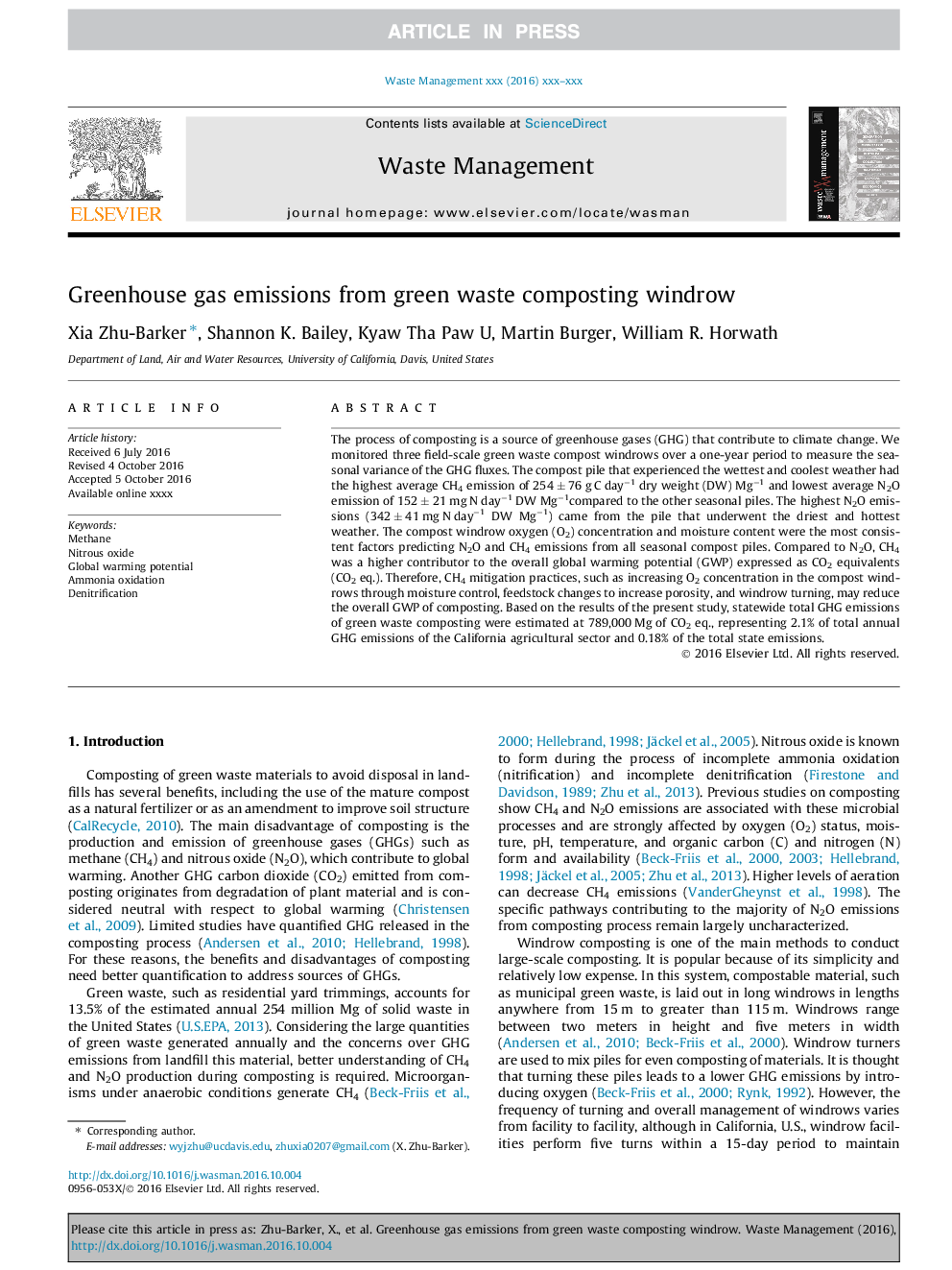| Article ID | Journal | Published Year | Pages | File Type |
|---|---|---|---|---|
| 5757012 | Waste Management | 2017 | 10 Pages |
Abstract
The process of composting is a source of greenhouse gases (GHG) that contribute to climate change. We monitored three field-scale green waste compost windrows over a one-year period to measure the seasonal variance of the GHG fluxes. The compost pile that experienced the wettest and coolest weather had the highest average CH4 emission of 254 ± 76 g C dayâ1 dry weight (DW) Mgâ1 and lowest average N2O emission of 152 ± 21 mg N dayâ1 DW Mgâ1compared to the other seasonal piles. The highest N2O emissions (342 ± 41 mg N dayâ1 DW Mgâ1) came from the pile that underwent the driest and hottest weather. The compost windrow oxygen (O2) concentration and moisture content were the most consistent factors predicting N2O and CH4 emissions from all seasonal compost piles. Compared to N2O, CH4 was a higher contributor to the overall global warming potential (GWP) expressed as CO2 equivalents (CO2 eq.). Therefore, CH4 mitigation practices, such as increasing O2 concentration in the compost windrows through moisture control, feedstock changes to increase porosity, and windrow turning, may reduce the overall GWP of composting. Based on the results of the present study, statewide total GHG emissions of green waste composting were estimated at 789,000 Mg of CO2 eq., representing 2.1% of total annual GHG emissions of the California agricultural sector and 0.18% of the total state emissions.
Related Topics
Physical Sciences and Engineering
Earth and Planetary Sciences
Geotechnical Engineering and Engineering Geology
Authors
Xia Zhu-Barker, Shannon K. Bailey, Kyaw Tha Paw U, Martin Burger, William R. Horwath,
